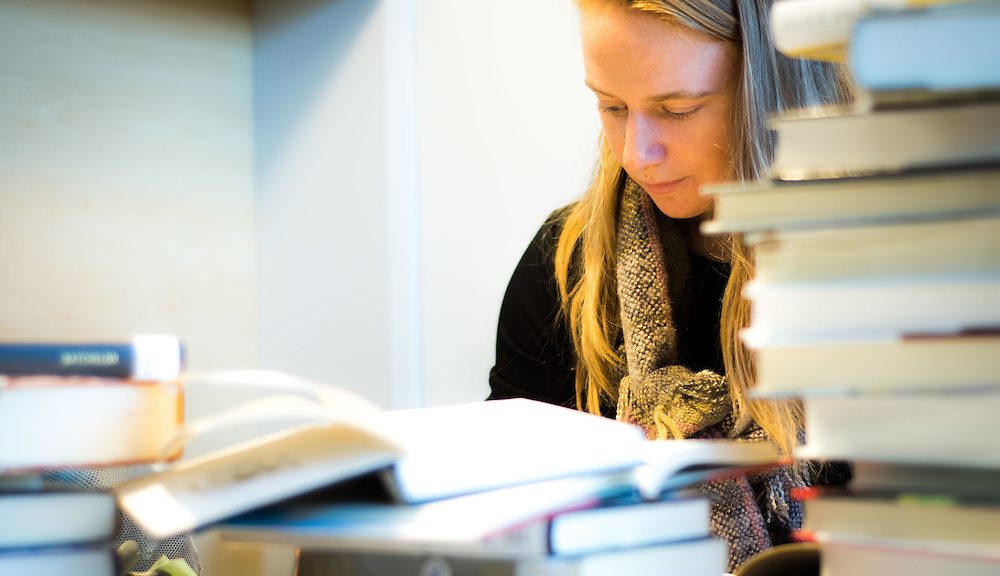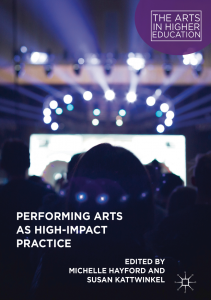Recently, a professor in the history department came to me with a question: “How do I mentor a freshman history student in research, when this student has none of the skills required to do original research in history?” The question arose because one of our Undergraduate Research Fellows – first-year students selected to participate in a four-year program of vigorous involvement in research on the basis of a competitive application process – had approached him asking if she could work with him. Because the majority of our URFs are interested in social science, education, business, and STEM research, he had not encountered such a request before. While experienced in mentoring upper-level history students in research, he had no game plan for working with a first-year student with, as he put it, “no skills.”
This is a challenge for a lot of us working in the humanities. In other fields, such as laboratory sciences or education, the apprenticeship model, in which early-stage students interested in research join a group, and then learn by watching other, more experienced student perform protocols and discuss outcomes, gradually building their own responsibilities and skills within the group, makes it relatively straightforward to include inexperienced, novice students in the research culture. In the humanities, where we are more likely to work alone, and even the most basic data collection requires expertise in such skills as paleography, archival searching, and language translation, mentoring a first-year aspiring researcher can seem like a burdensome and impossible task.
My own experience has taught me that like so many other things, successful mentoring of entry-level student research in the humanities is all about clear communication and close listening. Here, I am condensing a few of the main points from my conversation with my colleague from history, which he later reported to me were quite helpful in getting started with his eager, but unformed protegee.
Motivations matter
Begin by asking the student to talk about what drove them to come talk to you about research opportunities. Are they part of a program (such as our fellows, or an honors seminar) that requires them to meet with professors and discuss research? If so, what are they hoping to get out of the experience? Do they want to build skills? Are they looking for a line on their resume? Are they driven by curiosity about the field more generally? This is the listening phase – you will get a good sense of whether this is a student who would be engaged and interesting to work with. I think it’s always okay to say no, though best if you can point them towards some other avenues (other faculty, a course that the department offers, a student-run organization) for exploration.
Ask about their existing skills
We tend to assume that first-year students have no skills, but especially with the kind of ambitious students who actually overcome the immense anxiety barrier to come talk to you in person this may not be the case. For example, when I was first mentoring a first-year art history student, in my initial conversation with her I learned that she had taken four years of high-school Spanish and done a service project in Guatemala. Her language skills made her a great research assistant. In the case of my colleague’s history student, she really did have very few skills, but her enthusiasm and her openness to learning meant that she ended up doing some very good bibliographic research for him. All he had to do was show her how to use the various search tools, give her some instruction in Zotero, and she was off to the races.
Define expectations
This is probably the most important part of the conversation you’ll have with the novice researcher. What are the student’s expectations in terms of time commitments and learning outcomes? Do they want to have a presentable product at the end of the year? Be a co-author on a paper? Get paid? Get credit? On your end, you also need to be clear: what kinds of tasks can you imagine the student performing? What are realistic outcomes for the work they’ll be doing? If you’re thinking, “Great, this student can scan and process documents” and the student is thinking “I’m going to see my name in print” this could lead to some trouble down the road, so it is important to get this out in the open. I think it’s always perfectly fine to do as my history colleague did – start the student on what a more experienced researcher might consider the boring ground-work – putting together bibliographies, searching databases, and compiling easily-accessible information. The important thing is that the student understands how their work fits into the larger research project. My first-year Spanish-fluent student ended up getting a thank-you in the acknowledgement note in a published essay, and for her that was exactly what she expected, and therefore quite gratifying.
Use peer-mentoring
Do you have a more advanced student, perhaps a senior working on a senior thesis, who might serve as a role model and near-peer mentor for your novice student? In many disciplines (and also in the humanities where they are practiced collaboratively, especially in Europe), groups of researchers at all levels working on related projects regularly meet and discuss their progress. Consider getting your research students together on a regular basis to talk. This way your own research process is made transparent to the students, and you’ll have a better sense of the progress they’re making, but above all, the less experienced students will be able to imagine where they might be in a year or two.
Benefits
While it is no doubt true that first-year students and others new to research in humanities disciplines do not come through the door with the types of skills and understandings that allow us to do our work at a high level, this does not mean that they cannot contribute. Starting them off with very basic tasks, but contextualizing those tasks through regular conversations about the overall progress of the research, we initiate them into the culture of humanities inquiry. All too often, students have been told “this is how you write a research paper” without really learning the WHY of research, that is to say, they have been shown the process but not given any insight into the motivations and concepts that drive the process. Getting a first-year student inside the machine takes a little effort, but once there, they tend to get very excited about doing research (way more excited than you might expect, given that all they’re actually doing is scanning documents or doing data entry, or whatever), and they learn, intrinsically, both the hows and the whys of your discipline.

This work is licensed under a Creative Commons Attribution-NonCommercial-ShareAlike 4.0 International License






 EH Humanities Connections Grants in the 2018 round!
EH Humanities Connections Grants in the 2018 round! tly-elected CUR Arts and Humanities Councilor Michelle Hayford, Director of the Theatre, Dance, & Performance Technology Program at the University of Dayton, is co-editor with Susan Kattwinkel of Performing Arts as High-Impact Practice, in Palgrave’s The Arts in Higher Education series. As described on Palgrave’s website, “This book investigates how the performing arts in higher education nationally contribute to the “high impact practices,” as identified by the Association of American Colleges and Universities (AACU). Using the well-known map of the HIPs for illustrating the centrality of performing arts practices in higher education, the editors and authors of this volume call for increased participation by performing arts programs in general education and campus initiatives, with specific case studies as a guide. Performing arts contribute to the efforts of their institution in delivering a strong liberal arts education that uniquely serves students to meet the careers of the future. This is the first book to explicitly link the performing arts to the HIPs, and will result in the implementation of best practices to better meet the educational needs of students. At stake is the viability of performing arts programs to continue to serve students in their pursuit of a liberal arts education.”
tly-elected CUR Arts and Humanities Councilor Michelle Hayford, Director of the Theatre, Dance, & Performance Technology Program at the University of Dayton, is co-editor with Susan Kattwinkel of Performing Arts as High-Impact Practice, in Palgrave’s The Arts in Higher Education series. As described on Palgrave’s website, “This book investigates how the performing arts in higher education nationally contribute to the “high impact practices,” as identified by the Association of American Colleges and Universities (AACU). Using the well-known map of the HIPs for illustrating the centrality of performing arts practices in higher education, the editors and authors of this volume call for increased participation by performing arts programs in general education and campus initiatives, with specific case studies as a guide. Performing arts contribute to the efforts of their institution in delivering a strong liberal arts education that uniquely serves students to meet the careers of the future. This is the first book to explicitly link the performing arts to the HIPs, and will result in the implementation of best practices to better meet the educational needs of students. At stake is the viability of performing arts programs to continue to serve students in their pursuit of a liberal arts education.”
